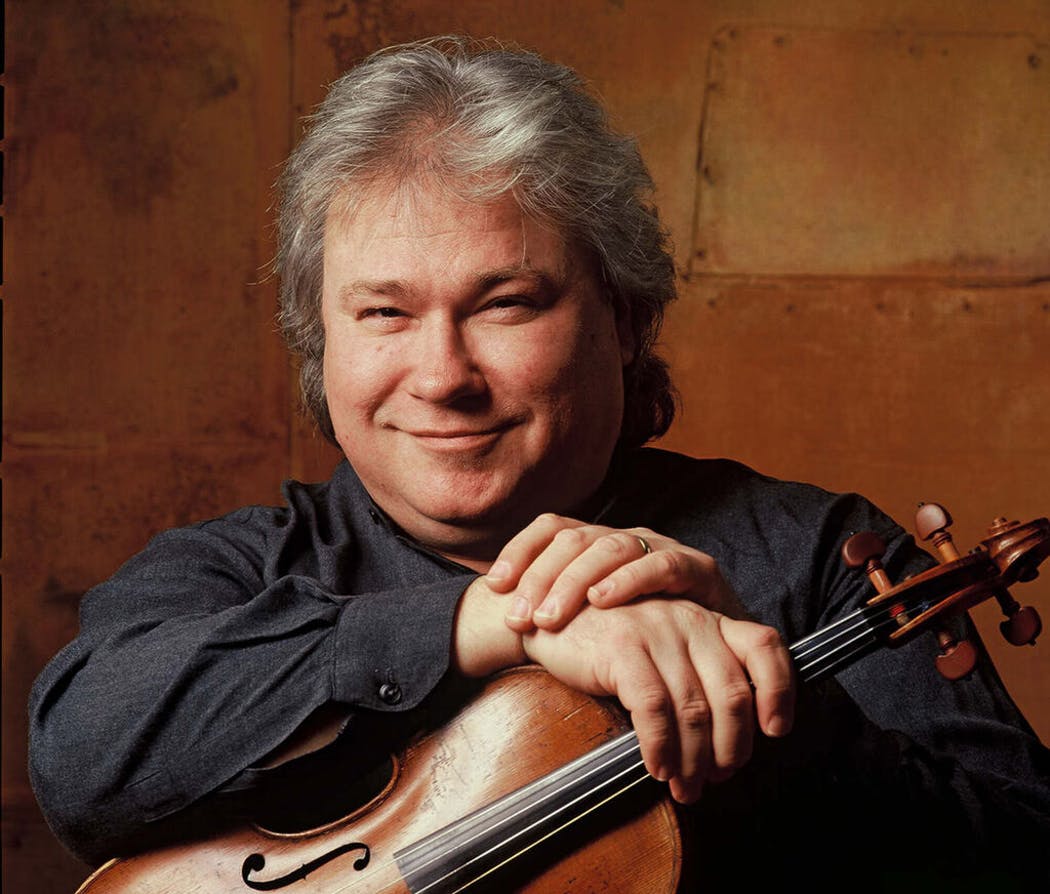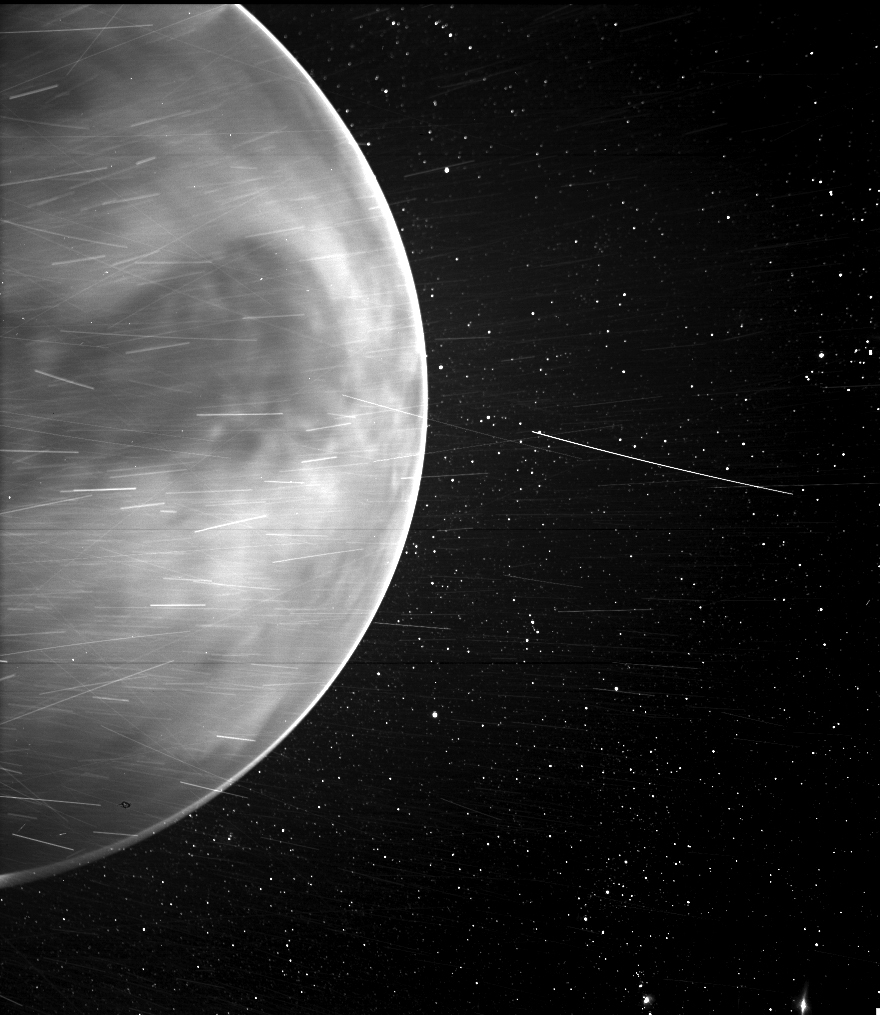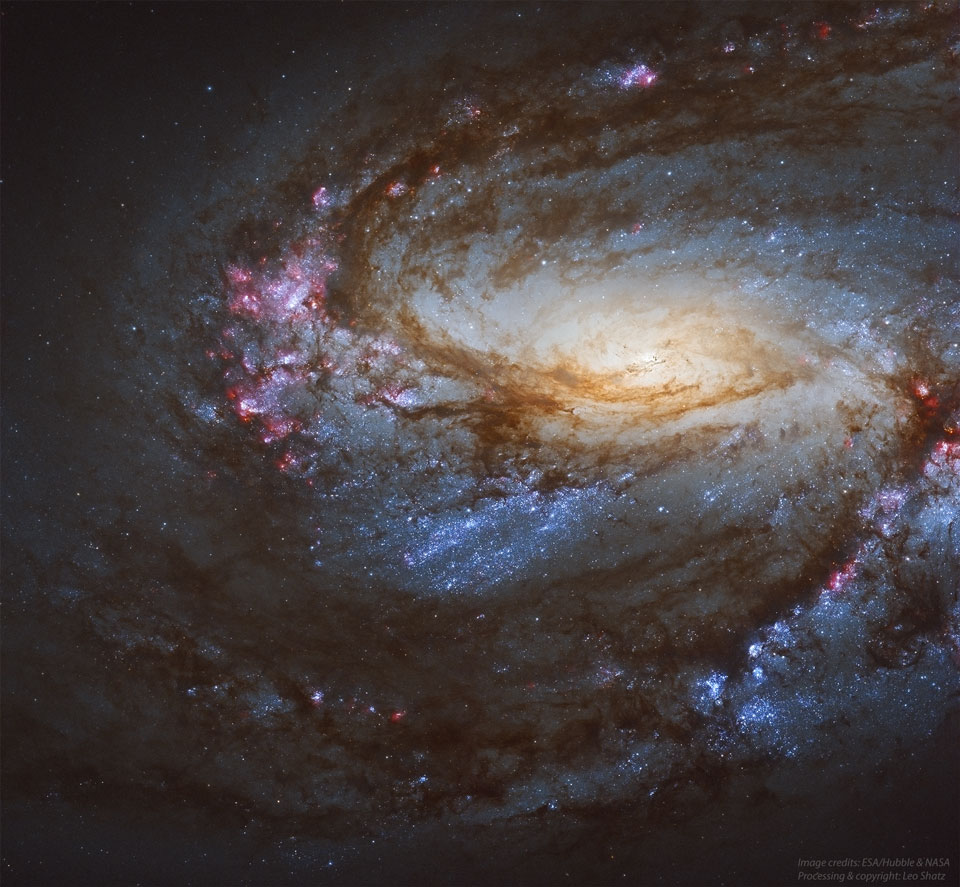Blog
This NASA/ESA Hubble Space Telescope Picture of the Week features NGC4826 — a spiral galaxy located 17 million light-years away in the constellation of Coma Berenices (Berenice’s Hair). This galaxy is often referred to as the “Black Eye”, or “Evil Eye”, galaxy because of the dark band of dust that sweeps across one side of its bright nucleus.
NGC4826 is known by astronomers for its strange internal motion. The gas in the outer regions of this galaxy and the gas in its inner regions are rotating in opposite directions, which might be related to a recent merger. New stars are forming in the region where the counter rotating gases collide. This galaxy was first discovered in 1779 by the English astronomer Edward Pigott.

Mitch Ryder (born William Sherille Levise, Jr.; February 26, 1945) is an American musician who has recorded more than 25 albums over more than four decades.
Ryder is noted for his gruff, wailing singing style and his dynamic stage performances. He was influenced by his father, a musician. As a teenager, Ryder sang backup with a black soul-music group known as the Peps, but racial animosities interfered with his continued presence in the group.
Ryder formed his first band, Tempest, when he was at Warren High School, and the group gained some notice playing at a Detroit soul music club called The Village. Ryder next appeared fronting a band named Billy Lee & The Rivieras, which had limited success until they met songwriter / record producer Bob Crewe. Crewe renamed the group Mitch Ryder & The Detroit Wheels, and they recorded several hit records for his DynoVoice Records and New Voice labels in the mid to late 1960s, most notably “Devil with a Blue Dress On“, their highest-charting single at number four, as well as “Jenny Take a Ride!”, which reached number 10 in 1965, and “Sock It to Me, Baby!”, a number six hit in 1967. The Detroit Wheels were John Badanjek on drums, Mark Manko on lead guitar, Joe Kubert (not to be confused with the comic book illustrator Joe Kubert) on rhythm guitar, Jim McCarty (not to be confused with the Yardbirds drummer of the same name) on lead guitar and Jim McAllister on bass.
more...
John R. Cash (born J. R. Cash; February 26, 1932 – September 12, 2003 Kingsland, AR) was an American singer, songwriter, musician, and actor. Much of Cash’s music contained themes of sorrow, moral tribulation, and redemption, especially in the later stages of his career. He was known for his deep, calm bass-baritone voice, the distinctive sound of his Tennessee Three backing band characterized by train-like chugging guitar rhythms, a rebelliousness coupled with an increasingly somber and humble demeanor, free prison concerts, and a trademark all-black stage wardrobe which earned him the nickname “The Man in Black“.
Born to poor cotton farmers in Kingsland, Arkansas, Cash rose to fame in the burgeoning rockabilly scene in Memphis, Tennessee, after four years in the Air Force. He traditionally began his concerts by simply introducing himself, “Hello, I’m Johnny Cash”, followed by “Folsom Prison Blues“, one of his signature songs. Alongside “Folsom Prison Blues”, his other signature songs include “I Walk the Line“, “Ring of Fire“, “Get Rhythm“, and “Man in Black“. He also recorded humorous numbers like “One Piece at a Time” and “A Boy Named Sue“, a duet with his future wife June called “Jackson” (followed by many further duets after their wedding), and railroad songs such as “Hey, Porter“, “Orange Blossom Special“, and “Rock Island Line“.During the last stage of his career, he covered songs by contemporary rock artists of the time; his most notable covers were “Hurt” by Nine Inch Nails, “Rusty Cage” by Soundgarden, and “Personal Jesus” by Depeche Mode.
Cash is one of the best-selling music artists of all time, having sold more than 90 million records worldwide. His genre-spanning music embraced country, rock and roll, rockabilly, blues, folk, and gospel sounds. This crossover appeal earned him the rare honor of being inducted into the Country Music, Rock and Roll, and Gospel Music Halls of Fame.
more...Antoine Dominique Domino Jr. (February 26, 1928 – October 24, 2017), known as Fats Domino, was an American pianist and singer-songwriter. One of the pioneers of rock and roll music, Domino sold more than 65 million records.
Between 1955 and 1960, he had eleven Top 10 US pop hits. By 1955 five of his records had sold more than a million copies, being certified gold. The Associated Press estimates that during his career, the artist “sold more than 110 million records and the Grammy organization states that Domino landed 37 songs in the Top 40 on the Billboard Hot 100 throughout his career, including 11 that peaked inside the Top 10″.
His humility and shyness may be one reason his contribution to the genre has been overlooked. The significance of his work was great however; Elvis Presley declared Domino to be “the real king of rock ‘n’ roll” and once announced that Domino “was a huge influence on me when I started out”. Four of Domino’s records were named to the Grammy Hall of Fame for their significance: “Blueberry Hill“, “Ain’t It A Shame“, “Walking to New Orleans” and “The Fat Man“. “The Fat Man” “is cited by some historians as the first rock and roll single and the first to sell more than 1 million copies”. Antoine Domino Jr. was born and raised in New Orleans, Louisiana, the youngest of eight children born to Antoine Caliste Domino (1879–1964) and Marie-Donatille Gros (1886–1971). The Domino family was of French Creole background, and Louisiana Creole was his first language.
more...David Pell (February 26, 1925 – May 7, 2017) was an American jazz saxophonist, bandleader and record producer. He was best known for leading a cool jazz octet in the 1950s.
Pell played in his teens with the big bands of Tony Pastor, Bob Astor, and Bobby Sherwood. In the 1940s he moved to California, where he played on Bob Crosby‘s radio show in 1946 and became a member of Les Brown‘s band from 1947 to 1955.
In 1953, he began working with his own ensembles, mostly as an octet with Pell on tenor saxophone, another saxophone (either a baritone or an alto), trumpet, trombone, guitar, and a piano-bass-drums rhythm section). Among the octet players were Pepper Adams, Benny Carter, Mel Lewis, Red Mitchell, Marty Paich, Art Pepper and, early his career, John Williams. These ensembles recorded in the 1950s for Atlantic, Kapp, Coral, Capitol, and RCA Victor. Pell also worked as a sideman for Shorty Rogers, Pete Rugolo, Benny Goodman, and Gene Krupa. He produced music in the 1950s and 1960s for Tops, Uni and Liberty; among his credits were singles by Gary Lewis & the Playboys.
more...The flamenco Bulerías is the fastest branch of Soleares, with a lively, intense dissonance that compliments the advanced rhythmic structure of the compás. Bulerías are possibly the most popular, yet also the most virtuosic and demanding for flamenco guitarists. The typical Bulería ranges from 160-275 BPM (extremely fast). Bulería is usually played por medio, and includes chord variations of A, B flat, and C. Another important characteristic of the Bulería a rhythmic switch, where beat 12 becomes the strong downbeat and beginning of the compás.
more...

Peter Ostroushko, virtuoso musician with everyone from Bob Dylan to Minnesota Orchestra, dies
Nobody at St. Joan of Arc Catholic Church was quite ready for musician Peter Ostroushko to speak at his own fundraiser after he’d suffered a stroke. Not ready for the humor. The honesty. The warmth. The grace. The inspiration.
Seated in a wheelchair, the virtuoso Minneapolis mandolinist/fiddler explained that the stroke had left his left arm useless. “I can’t play an instrument,” he pointed out. “My voice is compromised from the stroke.” Just then church bells rang. “Hello?” Ostroushko responded.
During his 20-minute ad-libbed monologue, the musician, one of Minnesota’s finest in any genre, understood his situation, but his mind was as sharp as ever. “I want to dispel a myth,” he said. “I got a phone call from someone who left a message on the phone that they wouldn’t be making it to my last concert. I’m not playing. This can’t possibly be my last concert.”
Ostroushko, who worked with everyone from Bob Dylan to the Minnesota Orchestra, died Wednesday afternoon of heart failure. He was 67.
“We have never known a better guy,” his daughter, Anna Ostroushko, posted on Facebook. “Please listen to or play some music tonight in his honor.”
Garrison Keillor, who relied on Ostroushko’s wide range of musicality throughout his radio show “A Prairie Home Companion,” posted a tribute to him on Facebook late Wednesday night.
“‘Prairie Home’ lost a dear family member today,” Keillor wrote, estimating that they taped about 250 shows together.
Whether he played with big names like Willie Nelson or contributed to Ken Burns documentaries, Ostroushko was ultimately a northeast Minneapolis guy.
“Peter Ostroushko was a stone cold, self-taught virtuoso who helped define Minnesota as we know it, the best this state has to offer,” said Minneapolis singer-songwriter Paul Metsa. “A triple threat on guitar, violin, and mandolin, he also had a beautiful singing voice. A gentle giant, and when he talked, we listened.”
During Ostroushko’s speech in July 2018 at the fundraiser, seven months after his stroke, he shared a history of his musical life. He told stories about his days with the Sky Blues Water Boys playing country music in downtown Minneapolis in the 1970s and the group’s singer, Becky Reimer Thompson, giving him driving lessons in a borrowed sports car with a stick shift. And about traveling with musician Dáithí Sproule and learning that the Irishman loved Fred Astaire so much he’d do the dapper one’s dance steps in their shared motel room. “He doesn’t do it in public,” Ostroushko joked.
Ostroushko grew up in Northeast Minneapolis, picking up his dad’s mandolin at age 3, eventually learning to play everything from Ukrainian folk songs to jazz. At age 21, he was summoned from his sick bed with pneumonia for his first time in a recording studio, for a session with Minnesota’s most famous music maker, Dylan, on “Blood on the Tracks” at Sound 80 in south Minneapolis in 1974.
At one point, Dylan took the newcomer’s mandolin to play it himself because the notes were too high for Ostroushko to handle. The next morning the still-ill Ostroushko woke up and thought he’d dreamed about recording with Dylan. No, a fellow musician confirmed, it really happened.
A versatile multi-instrumentalist and fast study, Ostroushko was welcomed by Garrison Keillor as a regular band member on radio’s “A Prairie Home Companion,” where he accompanied countless performers, including Emmylou Harris and John Hartford. He also had a presence on television, appearing on “Austin City Limits,” “Mister Rogers’ Neighborhood” and “Late Night with David Letterman.” His music was heard in Burns’ documentaries on Mark Twain and Lewis & Clark. He earned a regional Emmy for his soundtrack to the 2005 TPT series “Minnesota: A History of Land.”
Not confined to any genre, Ostroushko played Carnegie Hall with the Minnesota Orchestra, and his compositions have been performed by the St. Paul Chamber Orchestra and Moscow’s Kremlin Chamber Orchestra, among others.
Between 1985 and 2010, Ostroushko released more than 15 albums under his own name, most for St. Paul-based Red House Records, including 2012’s career-defining compilation “The Mando Chronicles,” spanning genres from bluegrass to classical and ethnic music from Brazil to Italy. He recorded with a cavalcade of Minnesota musicians, from jazz guitarist Dean Magraw to pop pianist Lorie Line. And he performed an annual holiday concert for many years.
“I was blown away by his talent many times over,” Twin Cities singer and friend Mary Jane Alm said. “We were so lucky to have him in our musical universe.”
The son of Ukrainian immigrants, Ostroushko was proud of his heritage and northeast neighborhood. When he gave up booze in 1982, he went to Nye’s Polanaise, the neighborhood landmark, for his last drink, “a zesty Martini,” as he once put it.
After his stroke, Ostroushko continued to work with mandolin students and host a podcast, “My Life and Time as a Radio Musician,” which was based on his decades of work with “A Prairie Home.”
“The last three years have been difficult for him health-wise, but he found real purpose in listening to hours and hours of performances,” Keillor wrote.
He is survived by his wife Marge, daughter Anna, sister Ludmilla, and brothers George and Taras.
Staff writer Chris Riemenschneider contributed to this report.
On a mission to explore the inner heliosphere and solar corona, on July 11, 2020 the Wide-field Imager on board NASA’s Parker Solar Probe captured this stunning view of the nightside of Venus at distance of about 12,400 kilometers (7,693 miles). The spacecraft was making the third of seven gravity-assist flybys of the inner planet. The gravity-asssist flybys are designed to use the approach to Venus to help the probe alter its orbit to ultimately come within 6 million kilometers (4 million miles) of the solar surface in late 2025. A surprising image, the side-looking camera seems to peer through the clouds to show a dark feature near the center known as Aphrodite Terra, the largest highland region on the Venusian surface. The bright rim at the edge of the planet is nightglow likely emitted by excited oxygen atoms recombining into molecules in the upper reaches of the atmosphere. Bright streaks and blemishes throughout the image are likely due to energetic charged particles, and dust near the camera reflecting sunlight. Skygazers from planet Earth probably recognize the familiar stars of Orion’s belt and sword at lower right.

George Harrison MBE (25 February 1943 – 29 November 2001) was an English musician, singer, songwriter, and music and film producer who achieved international fame as the lead guitarist of the Beatles. Sometimes called “the quiet Beatle”, Harrison embraced Indian culture and helped broaden the scope of popular music through his incorporation of Indian instrumentation and Hindu-aligned spirituality in the Beatles’ work. Although the majority of the band’s songs were written by John Lennon and Paul McCartney, most Beatles albums from 1965 onwards contained at least two Harrison compositions. His songs for the group include “Taxman“, “Within You Without You“, “While My Guitar Gently Weeps“, “Here Comes the Sun” and “Something“.
Harrison’s earliest musical influences included George Formby and Django Reinhardt; Carl Perkins, Chet Atkins and Chuck Berry were subsequent influences. By 1965, he had begun to lead the Beatles into folk rock through his interest in Bob Dylan and the Byrds, and towards Indian classical music through his use of the sitar on “Norwegian Wood (This Bird Has Flown)“. Having initiated the band’s embracing of Transcendental Meditation in 1967, he subsequently developed an association with the Hare Krishna movement. After the band’s break-up in 1970, Harrison released the triple album All Things Must Pass, a critically acclaimed work that produced his most successful hit single, “My Sweet Lord“, and introduced his signature sound as a solo artist, the slide guitar. He also organised the 1971 Concert for Bangladesh with Indian musician Ravi Shankar, a precursor to later benefit concerts such as Live Aid. In his role as a music and film producer, Harrison produced acts signed to the Beatles’ Apple record label before founding Dark Horse Records in 1974 and co-founding HandMade Films in 1978.
Harrison released several best-selling singles and albums as a solo performer. In 1988, he co-founded the platinum-selling supergroup the Traveling Wilburys. A prolific recording artist, he was featured as a guest guitarist on tracks by Badfinger, Ronnie Wood and Billy Preston, and collaborated on songs and music with Dylan, Eric Clapton, Ringo Starr and Tom Petty, among others. Rolling Stone magazine ranked him number 11 in their list of the “100 Greatest Guitarists of All Time”. He is a two-time Rock and Roll Hall of Fame inductee – as a member of the Beatles in 1988, and posthumously for his solo career in 2004.
Harrison’s first marriage, to model Pattie Boyd in 1966, ended in divorce in 1977. The following year he married Olivia Arias, with whom he had a son, Dhani. Harrison died from lung cancer in 2001 at the age of 58, two years after surviving a knife attack by an intruder at his Friar Park home. His remains were cremated and the ashes were scattered according to Hindu tradition in a private ceremony in the Ganges and Yamuna rivers in India. He left an estate of almost £100 million.
more...Ralph Edmund Stanley (February 25, 1927 – June 23, 2016) was an American bluegrass artist, known for his distinctive singing and banjo playing. Stanley began playing music in 1946, originally with his older brother Carter Stanley as part of The Stanley Brothers, and most often as the leader of his band, The Clinch Mountain Boys. He was also known as Dr. Ralph Stanley.
He was part of the first generation of bluegrass musicians and was inducted into both the International Bluegrass Music Hall of Honor and the Grand Ole Opry.
more...Hal Blaine (born Harold Simon Belsky; February 5, 1929 – March 11, 2019) was an American drummer and session musician, estimated to be among the most recorded studio drummers in the history of the music industry, claiming over 35,000 sessions and 6,000 singles. His drumming is featured on 150 US top 10 hits, 40 of which went to number one, as well as many film and television soundtracks.
Born in Holyoke, Massachusetts, Blaine moved with his family to California in 1943 and subsequently began playing jazz and big band music before taking up rock and roll session work. He became one of the regular players in Phil Spector‘s de facto house band, which Blaine nicknamed “the Wrecking Crew“. Some of the records Blaine played on include the Ronettes‘ single “Be My Baby” (1963), which contained a drum beat that became widely imitated, as well as works by popular artists such as Frank Sinatra, Elvis Presley, the Beach Boys, Simon & Garfunkel, the Carpenters, Neil Diamond, and the Byrds.
Blaine’s workload declined from the 1980s onwards as recording and musical practices changed. In 2000, he was among the inaugural “sidemen” inductees to the Rock and Roll Hall of Fame, and in 2018 he received a Grammy Lifetime Achievement Award.
more...René Thomas (25 February 1927 – 3 January 1975) was a jazz guitarist from Belgium.
In the early 1950s, he moved to Paris and became part of the modern jazz scene, playing in the style of Jimmy Raney. Back in Europe in 1962, he toured and recorded with Chet Baker, Bobby Jaspar, Kenny Clarke, Eddy Louiss, Stan Getz, Lucky Thompson, Sonny Criss, Jacques Pelzer, Lou Bennett, Charles “Lolo” Bellonzi, and Ingfried Hoffmann.
Thomas died of a heart attack in Santander, Spain at the age of 47 on 3 January 1975.
more...Ida Cox (born Ida M. Prather, February 26, 1888 or 1896 – November 10, 1967) was an American singer and vaudeville performer, best known for her blues performances and recordings. She was billed as “The Uncrowned Queen of the Blues”.
Cox was born Ida M. Prather, the daughter of Lamax and Susie (Knight) Prather in Toccoa, then Habersham County, Georgia, and grew up in Cedartown, Polk County, Georgia. Many sources give her birth date as February 26, 1896, but the researchers Bob Eagle and Eric LeBlanc have suggested she was born in 1888 and noted other evidence suggesting 1894. Her family lived and worked in the shadow of the Riverside Plantation, the private residence of the wealthy Prather family, from which her namesake came. She faced a future of poverty and few educational and employment opportunities.
Cox joined the local African Methodist Choir at an early age and developed an interest in gospel music and performance. At the age of 14, she left home to tour with White and Clark’s Black & Tan Minstrels. She began her career on stage by playing Topsy, a “pickaninny” role commonly performed in vaudeville shows of the time, often in blackface. Cox’s early experience with touring troupes included stints with other African-American travelling minstrel shows on the Theater Owners Booking Association vaudeville circuit: the Florida Orange Blossom Minstrels, the Silas Green Show, and the Rabbit Foot Minstrels.
more...This stunning Hubble Space Telescope image of nearby spiral galaxy M66 is just that. A spiral galaxy with a small central bar, M66 is a member of the Leo Galaxy Triplet, a group of three galaxies about 30 million light years from us. The Leo Triplet is a popular target for relatively small telescopes, in part because M66 and its galactic companions M65 and NGC 3628 all appear separated by about the angular width of a full moon. The featured image of M66 was taken by Hubble to help investigate the connection between star formation and molecular gas clouds. Clearly visible are bright blue stars, pink ionized hydrogen clouds — sprinkled all along the outer spiral arms, and dark dust lanes in which more star formation could be hiding.

More Posts
- RHYTHM ROOTS WORKSHOP 3-6-18
- The Cosmos with NGC 2170
- Flora Purim Day
- Wes Montgomery Day
- Furry Lewis Day
- World Music with Oshun Canto
- Daily Roots with Dennis Brown
- The Cosmos with HUDF
- Lou Levy Day
- Wilbur Little Day
- World Music with Francisco de la Torre
- Daily Roots with Cornell Campbell
- The Cosmos with NGC 3359
- Ricky Ford Day
- Jan Garbarek Day
- Miriam Makeba Day
- World Music with Jupiter & Okwess
- Daily Roots with Johnny Clarke
- The Cosmos with NGC 125
- Jimmy Garrison Day
